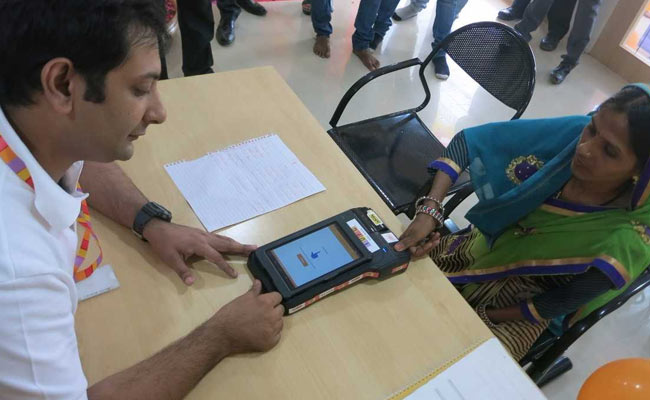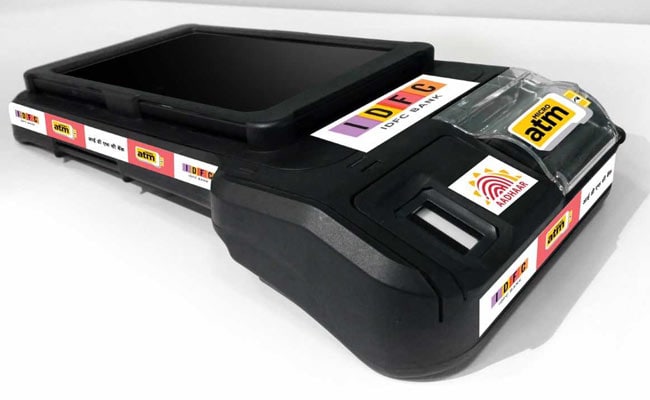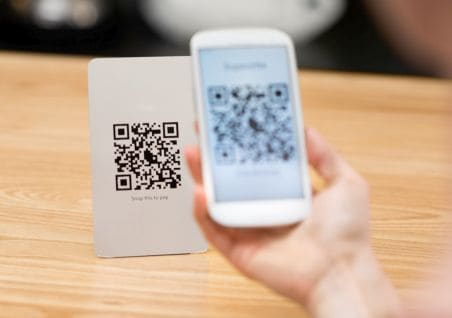- Cashless Bano India/
- Features/
- How Micro ATMs Could Help Make India A Cashless Economy
How Micro ATMs Could Help Make India A Cashless Economy

Highlights
- Micro ATMs help to transfer money within bank accounts
- Can be used to make various utility payments
- Customers can pay to recharge their accounts: DTH TV or mobile services
Also Read: Time For Good Old Ration Shops To Go Cashless
How convenient is it for banks to install?
The cost of deployment of a Micro ATM is way less than a regular ATM. Banks can connect Micro ATMs to their core banking system via a mobile phone connection, and customers would just have to get their identity authenticated to withdraw or put money into their bank accounts.
The process of installation followed by SBI involves Local Head Office (LHO) functionaries, who map Micro ATMs with Customer Service Points (CSP) codes in Kiosk Application, and then key is generated by SBIs technical team. Once key is generated, it is injected in the devices by the officials. The process enables the Micro-ATM ready for installation at CSP outlets. Also, it is mandatory for CSPs to install the driver in their PC/laptop to complete the device installation and activation process.
How do Micro ATMs work?
In order to reach out to people in far flung areas, banks assign a Business Correspondent, who will sign up with customers in his area, verify their identity, and deposit or disburse cash. The BC then carries a micro ATM, which looks similar to the small machine being used in retail stores to swipe debit or credit cards. Essentially, BCs will act as bank for the customers and all they need to do is verify the authenticity of customer using customers' UID (Aadhaar card).
While opening a bank account, the banking correspondent takes customer's fingerprint, which is then used as an authentication tool. Importantly, the personal details and fingerprint can also be linked to the Aadhaar Card, which can be used as the Customer ID as well.
The basic transaction types, which are supported by micro ATM, are deposit, purchase, withdrawal, balance enquiry, fund transfer and balance enquiry.
Also Read: With No Mobile Network, This Tribal Village Of Chhattisgarh Is Totally Cashless
How safe are Micro ATMs?
The Micro ATM standards ensure that transaction information is appropriately encrypted at the application layer (for storage and transmission). Transactions can be traced for purposes of monitoring fraud and dispute resolution. Possibility of fraud is only in case customers give their debit/credit card and PIN to the Business Correspondent or Customer Service Points. However, no cases of fraud through Micro-ATM have come to light as of now, stated SBI.
Also Read: Prime Minister Modi's Mann Ki Baat Mentions Government's eMarketplace (GeM), Will Further Boost Digital Transactions
Salient features:
1) Micro ATMs are portable and can be carried anywhere, making them ideal for banking outreach initiatives
2). Utility Payments: The customer can make various utility payments such as payment of electricity bill, water bill at the Micro ATM center thus removing the need to visit offices of respective utilities providers.
3). Transfer Money: It helps to transfer money within bank accounts
4). Make Payments: People can make payments via these Micro ATMs to buy daily use products
5) DTH/ Mobile re-charge: Customers can also pay to recharge their accounts for various services such as DTH TV and mobile connections.
6). Access to Direct Benefit Transfers of Government: Micro ATMs allow customers to easily access Direct Benefit Transfers of Government Welfare schemes into their accounts.
7). Post transaction, the micro ATM also prints out a receipt
As per government's directive to go digital and scale up micro-ATM usage in the country, many players are working to scale up their network of micro-ATMs.
State Bank of India is providing banking services through 58,451 Customer Service Points (CSPs) in addition to branches, and have already deployed Micro ATMs in 24,592 CSP outlets. And as per data from SBI, they are also under the process of providing 25,000 more Micro ATMs for CSP outlets. Out of 24,592 Micro ATMs installed, 19,676 are in rural areas.

Also Read: Digital Payments: Services That Do Not Need Cash Anymore
However, banking industry players are not the only ones who are providing the micro-ATM. Oxigen Services, a non-bank payments solutions provider, is also encouraged by the government guidelines to deploy such ATMs. Oxigen developed an in house Micro ATM called Oxigen Super PoS, which doesn't only limit a user to do banking transactions but also provides last mile banking, digital payments services and remittances in a 'real time' environment. Currently Oxigen has a retail footprint of 2,00,000 outlets, 10,000 micro-ATM points and has processed over 4 billion transactions till date with a current transaction volume rate of 600 million transactions per annum with a customer base of over 150 million.
Also Read: What Are The Challenges India Will Have To Overcome To Become Cashless?
About The Campaign

NDTV along with MasterCard is launching a multi-platform campaign “Cashless Bano India”, to create digital awareness and educate the masses about digital payment solutions for day to day transactions.
The campaign aims to take the message of a cash free India to the country, all while educating them on the ways and means to do it.
We aim to reach out to people and educate them on:
1). Digital and financial literacy
2). New generation digital payment solutions
3). Enabling merchants and consumers to understand and adopt secured and safe payment Solutions
4). Ease of usage at point of sales


